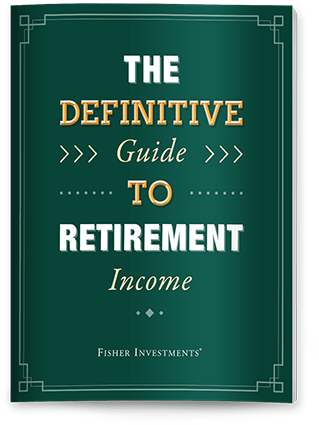Qualified Longevity Annuity Contracts (QLACs)
No one wants to run out of money in retirement, so it’s understandable why people fear not having adequate income to pay for necessities like long-term care or to cover rising costs because of inflation.
For retirees with pretax retirement savings accounts like 401(k)s and individual retirement accounts (IRAs), the annuity industry has a product for you: qualified longevity annuity contracts (QLACs). A QLAC provides guaranteed monthly payments for life in exchange for a portion of your pretax retirement savings. As with any contract, you should analyze the pros and cons before committing a portion of your retirement funds.
QLAC Benefits
When you save for retirement through a qualified plan like an IRA or 401(k), you’re often forced to start taking withdrawals after age 73, whether you need to or not. These withdrawals are called required minimum distributions (RMDs). QLACs are a type of deferred income annuity that can help reduce your RMDs early on. RMDs force you to start withdrawing funds from your IRA and inactive 401(k) accounts after you reach age 73.
Deferred QLAC assets don’t factor into RMD calculations until the income is started. QLACs allow individuals to defer payments until a maximum age of 85. Therefore, if you convert a portion of your IRA or 401(k) savings into a QLAC, the money isn’t subject to mandatory withdrawals when you hit 73. After the income is started between ages 73 and 85, annuity payments factor into the calculation of your RMDs and withdrawals are taxed as ordinary income. The IRS, however, sets limits on how much of your tax-deferred retirement savings you can allocate to a QLAC. This should be discussed with a tax advisor as each investor’s circumstance is different.
Another potential benefit of QLACs is they aren’t considered assets under Medicaid guidelines, providing some flexibility in qualifying for long-term care. Although the Affordable Care Act eliminated federal asset limits, some states impose their own asset tests. So if you are (or would like to be) covered by Medicaid and eligible for long-term care coverage, QLACs may help protect your assets from spend-down requirements.

See Our Investment Guides
The world of investing can seem like a giant maze. Fisher Investments has developed several informational and educational guides tackling a variety of investing topics.
QLAC Pitfalls
Although QLACs provide a lifetime income stream and can help temporarily lower your tax bill, are they worth it? In our view, the answer is frequently no. QLACs suffer many of the same drawbacks as any other annuity:
- Inflation: Inflation has averaged around 3% a year since 1925.1 So for a retiree with a life expectancy of 85 years, inflation can result in a significant reduction in purchasing power over time. For example, say you receive an annuity income of $50,000 today and it comfortably covers your living expenses. To have the same amount of purchasing power in 20 years, you would need at least $90,000. Since companies typically do not adjust annuity income for inflation, this would represent a significant shortfall in your purchasing power.
- Risk of insurer insolvency: Offered by an insurance company, an annuity is an insurance product designed to address the risk of you outliving your savings. Annuity providers often present annuities as a safe strategy that provides a guaranteed income stream.
What happens to your lump sum payment or income stream if the insurance company goes out of business? Remember—you exchange the initial lump sum payment for the lifetime stream of guaranteed income payments. The funds are irrevocably committed. The guaranteed income is subject to the ability of the insurance company to make those payments. If the insurer fails, you stand a good chance of losing some or all of your money. State guaranty funds can often protect annuity owners if an insurance company fails. However, the protection offered is generally limited, differs from state to state and is unlikely to fully compensate the annuitant. - Forgone growth: Although temporary RMD reductions might be appealing, QLACs may be counterproductive to reaching your longer-term retirement goals. You should weigh the tax deferral you gain by purchasing a QLAC against the investment returns you give up. When you lock up a lump sum of your retirement money in exchange for a guaranteed future income stream, you forgo the potential investment returns from capital appreciation. The guaranteed income stream from the annuity might not adequately compensate for the loss of investment returns you would have had if you had a liquid investment portfolio. For example, if you had purchased a mix of bonds and stocks in your portfolio, you could receive cash flow from dividends on stocks, interest payments from bonds or from selectively selling securities.
- Liquidity: Once you purchase a QLAC, it limits your flexibility. Sure, payments are deferred to some point in the future, but once you commit money to a QLAC, you cannot take back the lump sum. If emergencies arise or you are looking to make a large withdrawal from the IRA or 401(k), this illiquidity could present some problems.
How Fisher Investments Can Help
If you own longevity annuities, have a portfolio of $1,000,000 or more and would like more in-depth evaluation, contact us. We have licensed Annuity Counselors that can help educate you on the pros and cons that apply to your specific annuity contract, or any that you may be considering.
The contents of this webpage should not be construed as tax advice. Please contact your tax professional.
1Source: United States Consumer Price Index; Global Financial Data as of 3/8/2024. Inflation rate was 2.94% based on US BLS Consumer Price Index from 12/31/1925 to 12/31/2023.




